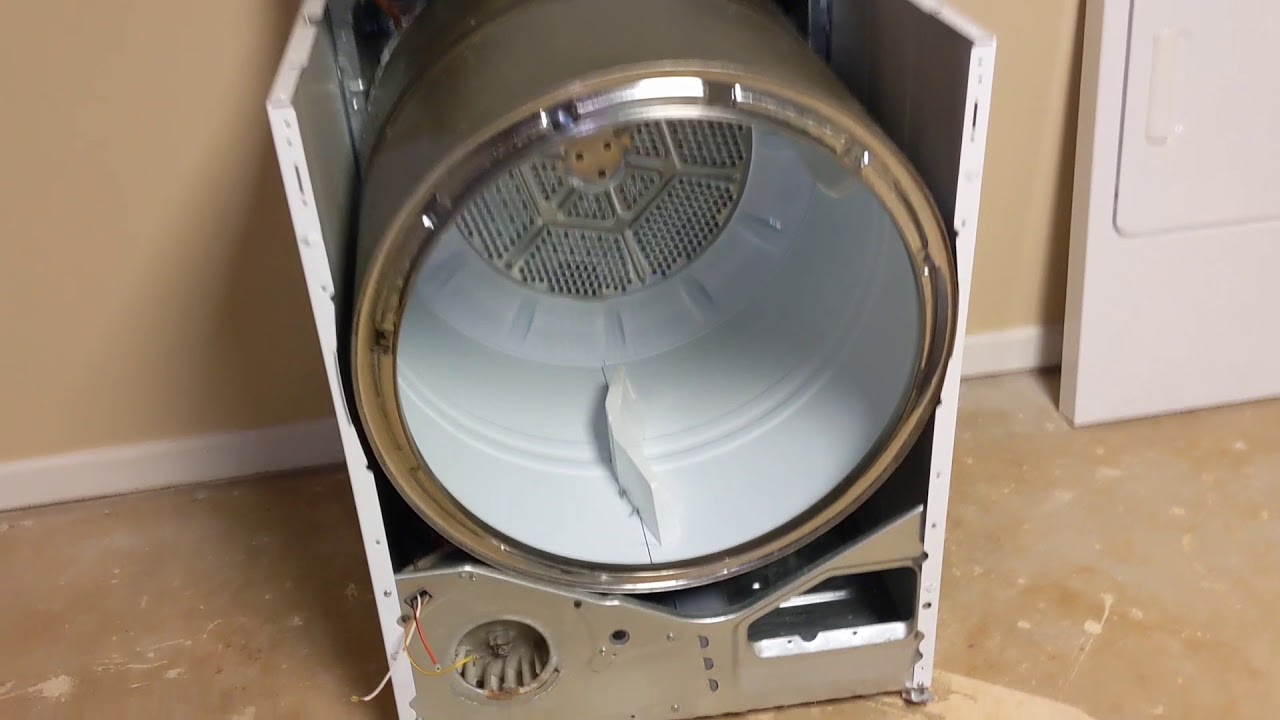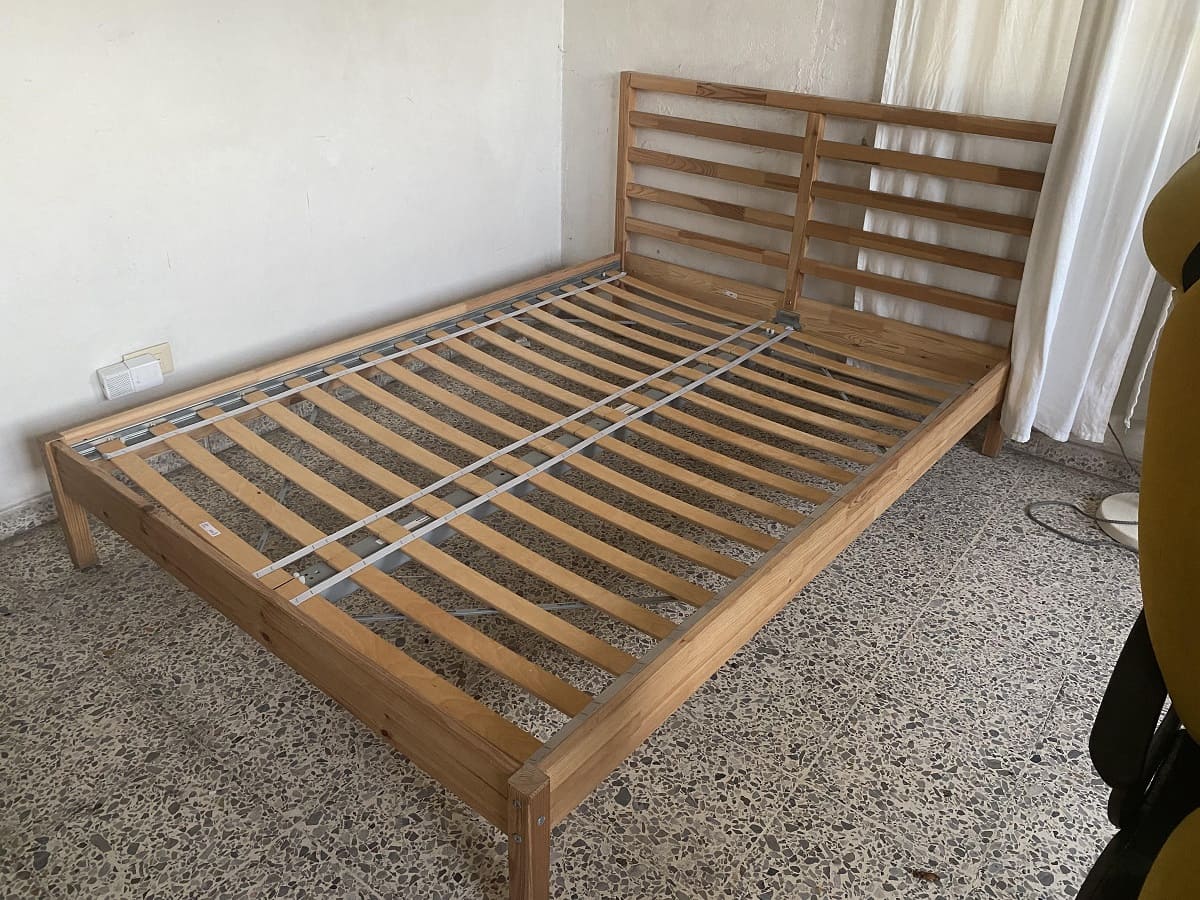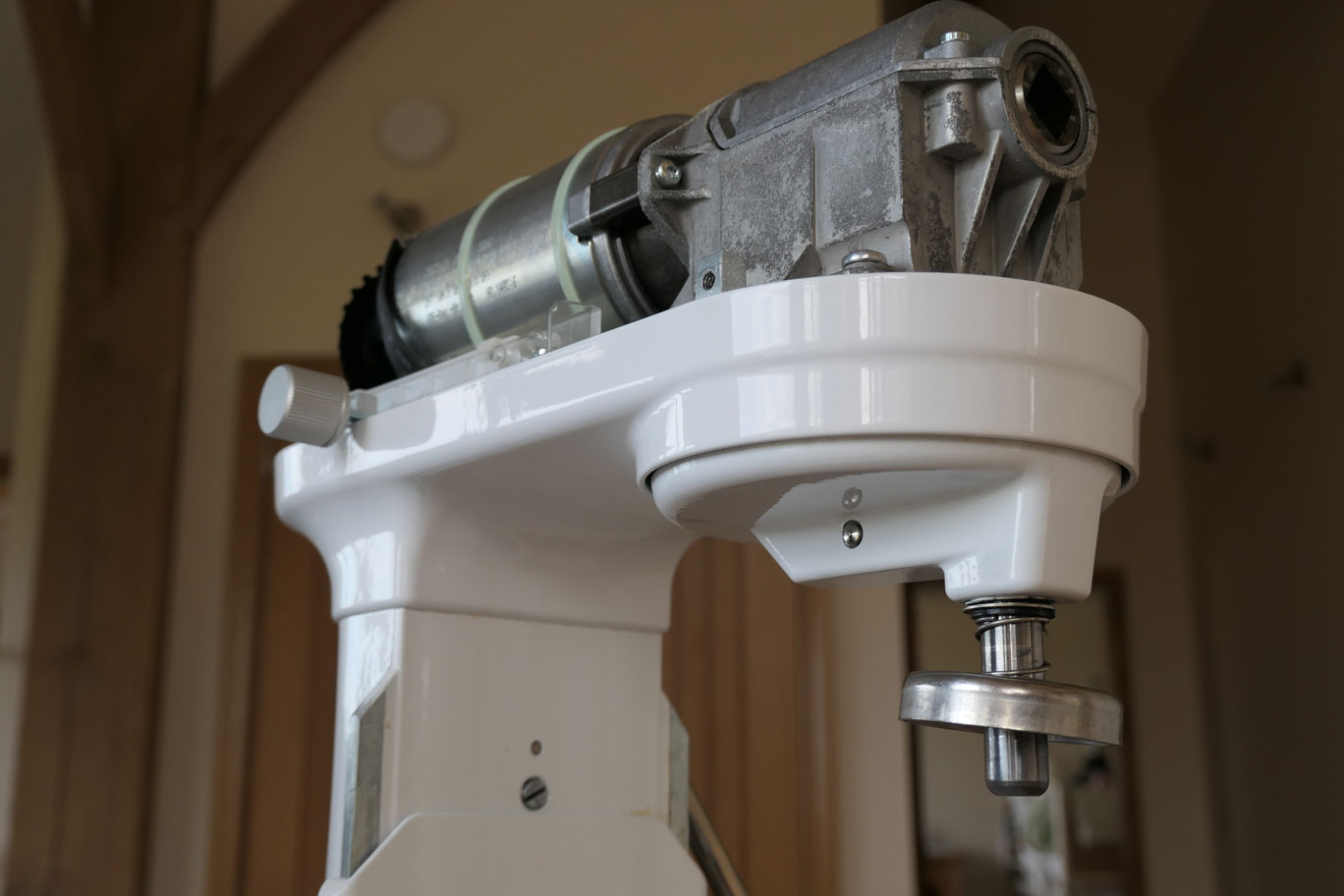Home>Furniture & Design>Living Room Furniture>How To Take A Recliner Couch Apart


Living Room Furniture
How To Take A Recliner Couch Apart
Modified: October 19, 2024
Learn how to properly disassemble a recliner couch with our step-by-step guide. Get expert tips for taking apart living room furniture for easy moving and maintenance.
(Many of the links in this article redirect to a specific reviewed product. Your purchase of these products through affiliate links helps to generate commission for Storables.com, at no extra cost. Learn more)
Introduction
Taking apart a recliner couch may seem like a daunting task, but with the right tools and a systematic approach, it can be a manageable and rewarding endeavor. Whether you're moving to a new home, replacing worn-out components, or simply curious about the inner workings of your furniture, understanding how to disassemble a recliner couch can be invaluable.
By following a few simple steps, you can safely disassemble your recliner couch without causing damage to its components. This process can also make it easier to transport the couch through narrow doorways or up and down stairs, saving you from the frustration of trying to maneuver a large, unwieldy piece of furniture.
In this guide, we will walk you through the step-by-step process of disassembling a recliner couch. From removing the cushions to disassembling the reclining mechanism, you'll gain a comprehensive understanding of how to take apart your couch with confidence. So, gather your tools, set aside some time, and let's dive into the process of deconstructing a recliner couch.
Key Takeaways:
- Disassembling a recliner couch requires patience and the right tools. By following the step-by-step process, you can gain valuable insights into its construction and functionality, empowering you for future maintenance or repairs.
- The disassembly process offers an opportunity to inspect for wear, damage, or the need for maintenance. It’s a journey of discovery that can be both educational and empowering, providing a deeper understanding of your furniture.
Read more: How To Take Apart A Catnapper Recliner
Tools Needed
Before embarking on the task of disassembling a recliner couch, it's essential to gather the necessary tools to ensure a smooth and efficient process. Here's a list of tools you'll need:
-
Screwdriver Set: A set of screwdrivers with various head types, including Phillips and flathead, will be indispensable for removing screws from different parts of the recliner couch.
-
Adjustable Wrench: This versatile tool will come in handy for loosening and tightening nuts and bolts, particularly when dealing with the reclining mechanism and other hardware components.
-
Pliers: Having a pair of pliers, such as slip-joint or needle-nose, will facilitate the removal of stubborn fasteners and provide a better grip when handling small parts.
-
Allen Wrench Set: Many recliner couches feature components secured with Allen screws, so having a set of Allen wrenches in various sizes will enable you to tackle these fasteners effectively.
-
Protective Gloves: It's advisable to wear protective gloves to shield your hands from sharp edges, splinters, or any potential hazards while disassembling the couch.
-
Furniture Blankets or Moving Straps: If you plan to transport the disassembled couch, having furniture blankets or moving straps can help protect the components and make handling and moving them easier.
-
Marker or Labels: To keep track of the disassembled parts and hardware, having a marker or labels will allow you to clearly mark and organize the pieces for reassembly.
By ensuring you have these essential tools at your disposal, you'll be well-prepared to tackle the disassembly of your recliner couch. With the right equipment on hand, you can proceed with confidence, knowing that you have everything you need to successfully take apart your couch.
Step 1: Remove the Cushions
The first step in disassembling a recliner couch is to remove the cushions. This initial task not only lightens the load but also provides access to the internal components of the couch. Here's a detailed guide on how to effectively remove the cushions:
-
Flip the Couch: Start by flipping the recliner couch onto its back or side, ensuring that it is stable and secure. This position will make it easier to access the underside of the couch and remove the cushions.
-
Locate the Fasteners: Examine the underside of the couch to identify the fasteners securing the cushions in place. Depending on the design of the couch, the cushions may be held in position by screws, Velcro straps, or clips.
-
Unfasten the Cushions: Using the appropriate tools, such as a screwdriver or pliers, carefully unfasten the screws, release the Velcro straps, or unclip the attachments holding the cushions. Take note of the location and arrangement of the fasteners to ensure proper reassembly later.
-
Remove the Cushions: Once the fasteners are undone, gently lift and remove the cushions from the couch frame. Place the cushions in a safe and clean area to prevent them from getting damaged or soiled during the disassembly process.
-
Label or Mark the Cushions: To maintain organization and facilitate reassembly, consider labeling or marking the cushions to indicate their placement and orientation. This simple step can prevent confusion when it's time to put the couch back together.
By carefully following these steps, you can effectively remove the cushions from your recliner couch, setting the stage for the subsequent disassembly tasks. With the cushions out of the way, you'll have clearer access to the internal components, making it easier to proceed with the next steps in the disassembly process.
Step 2: Unscrew the Legs
After successfully removing the cushions, the next crucial step in disassembling a recliner couch is to unscrew the legs. The legs are typically attached to the base of the couch and may vary in design, ranging from wooden legs with visible screws to concealed metal legs. Here's a detailed guide on how to proceed with this essential task:
-
Locate the Leg Attachments: Begin by inspecting the underside of the couch to identify the attachment points of the legs. Depending on the couch's design, the legs may be secured with visible screws or integrated into the frame with concealed fasteners.
-
Choose the Right Tool: Select the appropriate tool, such as a screwdriver or wrench, based on the type of fasteners used to secure the legs. For visible screws, a screwdriver will suffice, while concealed fasteners may require an adjustable wrench or specific tool provided by the manufacturer.
-
Support the Couch: To ensure stability and safety, it's advisable to have someone assist you in supporting the couch while you work on unscrewing the legs. This prevents the couch from tipping or shifting during the process.
-
Unscrew the Legs: Using the chosen tool, carefully unscrew the legs from the base of the couch. Apply steady and controlled force to loosen the screws or fasteners, taking care not to damage the surrounding upholstery or frame.
-
Set Aside the Legs: Once the legs are detached, set them aside in a designated area, ensuring that the screws or fasteners are kept together with the respective legs. This organization will simplify the reassembly process later on.
-
Inspect for Additional Attachments: After removing the legs, inspect the underside of the couch to ensure that all attachments related to the legs, such as brackets or support plates, have been accounted for and removed.
By meticulously following these steps, you can effectively unscrew the legs from your recliner couch, preparing it for further disassembly. With the legs detached, the couch will be lighter and more maneuverable, setting the stage for the subsequent steps in the disassembly process.
This systematic approach ensures that the disassembly is conducted with precision and care, minimizing the risk of damage to the couch and its components. With the legs removed, you're one step closer to gaining a comprehensive understanding of your recliner couch's construction and functionality.
Before taking apart a recliner couch, make sure to remove any cushions and pillows. Look for any screws or bolts holding the pieces together, and use a screwdriver or wrench to carefully remove them. Keep track of the pieces and hardware to make reassembly easier.
Step 3: Detach the Backrest
Once the cushions and legs have been removed, the next pivotal step in disassembling a recliner couch is to detach the backrest. The backrest is a significant component of the couch, providing support and structure, and separating it from the rest of the frame is essential for a thorough disassembly. Here's a detailed guide on how to effectively detach the backrest:
-
Access the Fasteners: Begin by examining the rear and sides of the couch to locate the fasteners securing the backrest to the frame. Depending on the couch's design, the backrest may be attached with screws, bolts, or brackets.
-
Choose the Right Tools: Select the appropriate tools, such as a screwdriver, wrench, or pliers, based on the type of fasteners used to secure the backrest. It's essential to use the correct tools to avoid damaging the components or injuring yourself during the disassembly process.
-
Support the Backrest: To ensure stability and safety, have someone assist you in supporting the backrest while you work on detaching it from the frame. This prevents the backrest from shifting or falling, minimizing the risk of damage.
-
Unfasten the Backrest: Using the chosen tools, carefully unfasten the screws, bolts, or brackets securing the backrest to the frame. Apply controlled force to loosen the fasteners, taking care not to damage the upholstery or surrounding components.
-
Gently Remove the Backrest: Once the fasteners are undone, gently lift and detach the backrest from the frame. Place the backrest in a safe and secure area, ensuring that it is protected from potential damage during the disassembly process.
-
Inspect for Additional Attachments: After removing the backrest, inspect the frame to ensure that all attachments related to the backrest, such as brackets or support structures, have been accounted for and removed.
By meticulously following these steps, you can effectively detach the backrest from your recliner couch, further deconstructing its components for a comprehensive understanding. With the backrest separated, you gain insight into the internal structure of the couch, paving the way for the subsequent steps in the disassembly process.
This systematic approach ensures that the disassembly is conducted with precision and care, minimizing the risk of damage to the couch and its components. With the backrest removed, you're one step closer to gaining a comprehensive understanding of your recliner couch's construction and functionality.
Read more: How To Build A Couch With A Recliner
Step 4: Separate the Seat from the Frame
With the backrest detached, the next critical step in disassembling a recliner couch is to separate the seat from the frame. This task involves disconnecting the seat, which encompasses the seating surface and its associated components, from the main frame of the couch. By effectively separating the seat from the frame, you gain a deeper understanding of the internal structure and mechanisms of the couch. Here's a detailed guide on how to proceed with this essential task:
-
Identify the Attachment Points: Begin by inspecting the underside and sides of the couch to locate the attachment points securing the seat to the frame. Depending on the couch's design, the seat may be fastened with screws, bolts, or clips, and it's essential to identify and understand the type of fasteners used.
-
Prepare the Area: Clear the surrounding area to create a workspace for the disassembly process. Ensure that the space is clean, well-lit, and free from any obstacles that may impede the separation of the seat from the frame.
-
Choose the Right Tools: Select the appropriate tools, such as a screwdriver, wrench, or pliers, based on the type of fasteners used to secure the seat. Having the right tools at hand will facilitate a smooth and efficient disassembly process.
-
Support the Seat: To ensure stability and safety, have someone assist you in supporting the seat while you work on separating it from the frame. This prevents the seat from shifting or falling, minimizing the risk of damage to the components.
-
Unfasten the Seat: Using the chosen tools, carefully unfasten the screws, bolts, or clips securing the seat to the frame. Apply controlled force to loosen the fasteners, taking care not to damage the upholstery or surrounding components.
-
Lift and Remove the Seat: Once the fasteners are undone, gently lift and separate the seat from the frame. Take care to maneuver the seat out of its position, ensuring that it is lifted evenly and smoothly to avoid any strain on the components.
-
Inspect for Additional Attachments: After separating the seat from the frame, inspect the frame to ensure that all attachments related to the seat, such as brackets or support structures, have been accounted for and removed.
By meticulously following these steps, you can effectively separate the seat from the frame of your recliner couch, gaining a comprehensive understanding of its internal structure and components. With the seat detached, you're one step closer to unraveling the intricacies of your recliner couch, setting the stage for the subsequent steps in the disassembly process.
Step 5: Disassemble the Reclining Mechanism
Disassembling the reclining mechanism is a crucial step in the comprehensive disassembly of a recliner couch. The reclining mechanism is responsible for the adjustable functionality of the couch, allowing users to recline the backrest and extend the footrest for enhanced comfort. Understanding the intricacies of this mechanism provides valuable insight into the functionality and construction of the recliner couch.
Here's a detailed guide on how to effectively disassemble the reclining mechanism:
-
Access the Mechanism: Begin by locating the reclining mechanism, which is typically situated beneath the seat of the couch. Depending on the design of the recliner, the mechanism may be enclosed within a housing or be partially visible, featuring levers, springs, and linkages.
-
Secure the Couch: Ensure that the couch is positioned securely and stably, providing a safe working environment for the disassembly process. If necessary, enlist the assistance of another person to support the couch during the disassembly of the reclining mechanism.
-
Identify Fasteners and Components: Inspect the reclining mechanism to identify the fasteners, such as screws or bolts, securing it to the frame of the couch. Additionally, take note of the various components comprising the mechanism, including springs, levers, and pivot points.
-
Select the Appropriate Tools: Choose the right tools for disassembling the reclining mechanism, such as screwdrivers, wrenches, and pliers. It's essential to have the necessary tools on hand to facilitate the removal of fasteners and components without causing damage.
-
Unfasten the Mechanism: Using the selected tools, carefully unfasten the screws or bolts securing the reclining mechanism to the frame of the couch. Exercise caution to avoid misplacing any small components or hardware during the disassembly process.
-
Detach the Components: Once the fasteners are removed, gently detach the components of the reclining mechanism, taking note of their arrangement and orientation. This step may involve releasing tension from springs or disconnecting linkages to separate the mechanism from the couch.
-
Organize and Label Components: As you disassemble the reclining mechanism, organize the components and hardware, and consider labeling them to ensure proper reassembly. Keeping the parts organized will streamline the process when it's time to put the couch back together.
-
Inspect for Wear and Damage: While disassembling the reclining mechanism, take the opportunity to inspect the components for any signs of wear, damage, or malfunction. This assessment can guide future maintenance or repair efforts for the recliner couch.
By meticulously following these steps, you can effectively disassemble the reclining mechanism of your recliner couch, gaining a comprehensive understanding of its internal workings and components. With the reclining mechanism deconstructed, you'll have unraveled the intricate functionality of the couch, setting the stage for any necessary maintenance, repair, or reassembly.
This systematic approach ensures that the disassembly is conducted with precision and care, providing valuable insights into the construction and operation of the recliner couch. With the reclining mechanism disassembled, you've gained a deeper understanding of this integral component, empowering you to proceed with confidence in any further maintenance or reassembly endeavors.
Conclusion
Disassembling a recliner couch is a task that requires patience, attention to detail, and the right tools. By following the step-by-step process outlined in this guide, you can effectively deconstruct your recliner couch, gaining valuable insights into its construction and functionality. From removing the cushions to disassembling the reclining mechanism, each step contributes to a comprehensive understanding of the inner workings of the couch.
As you embark on the disassembly journey, it's important to approach each task with care and precision. By identifying attachment points, choosing the right tools, and enlisting assistance when needed, you can ensure that the process is conducted smoothly and safely. Additionally, organizing and labeling components as they are removed will simplify the reassembly process in the future.
Through the disassembly process, you gain a deeper appreciation for the craftsmanship and engineering that goes into creating a recliner couch. The intricate mechanisms, sturdy frame, and comfortable upholstery all come together to form a piece of furniture that provides relaxation and support.
Furthermore, the disassembly process offers an opportunity to inspect the components for wear, damage, or the need for maintenance. By carefully examining each part as it is removed, you can identify any issues that may require attention, such as loose fasteners, worn-out springs, or damaged upholstery.
Once the disassembly is complete, you may find yourself equipped with the knowledge and confidence to perform maintenance or repairs on your recliner couch. Whether it's replacing worn-out components, addressing structural issues, or simply gaining a deeper understanding of how the couch functions, the disassembly process can be both educational and empowering.
In conclusion, the process of disassembling a recliner couch is not only a practical endeavor but also a journey of discovery. By approaching the task with patience and a methodical mindset, you can unravel the complexities of your couch, paving the way for future maintenance, repair, or reassembly with confidence and insight.
Frequently Asked Questions about How To Take A Recliner Couch Apart
Was this page helpful?
At Storables.com, we guarantee accurate and reliable information. Our content, validated by Expert Board Contributors, is crafted following stringent Editorial Policies. We're committed to providing you with well-researched, expert-backed insights for all your informational needs.















0 thoughts on “How To Take A Recliner Couch Apart”